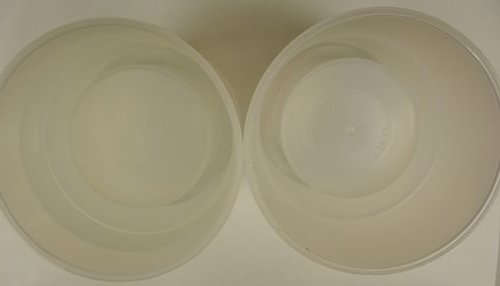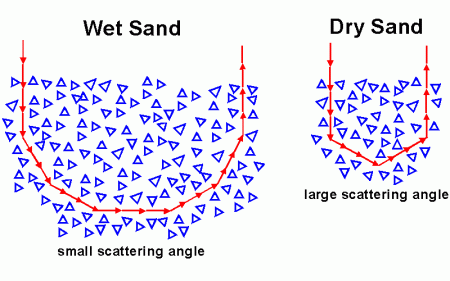Why does wet sand look darker than dry sand?
Why does wet sand look darker than dry sand?
LEE Boon-ying
Water is colourless and transparent, but why is wet sand darker than dry sand?

Is it because water absorbs more light than air? Not entirely correct. Water in a bucket does not appear much darker than air in an empty bucket (see photo below).

All else being equal, wet sand looks darker because not much light is coming out. The amount of light coming out depends on the change in direction when the light hits a sand grain.
Take a wine glass. Recall how much more difficult it is to find it in water than in air. In this case, the change in the direction of light is very small in water (light practically goes straight through the glass). In contrast, it is easier to see a glass held in air because some light is reflected from it (i.e. a change in direction of light).
For sand grains in water, the change in the direction of light is smaller than in air. The figure below illustrates the difference:-

It shows that, on average, it takes a much longer path for light in wet sand to come out (left) than in dry sand (right). The longer the path, the greater the chance that light gets absorbed. Hence, wet sand looks darker than dry sand.
Reference:
[1] Bohren, C.F., 1987, "Clouds in a glass of beer", Dover Publications Inc.
[1] Bohren, C.F., 1987, "Clouds in a glass of beer", Dover Publications Inc.